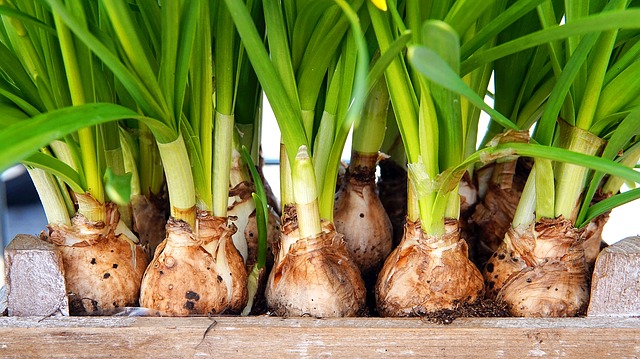Now that fall is here, now’s the perfect time to think about planting some fall bulbs to encourage flowers to come up in the spring. Below are some tips that you can use to help your flowers have the best start in life.

Choose Quality Bulbs
When you are going to plant bulbs in the fall, you want to make sure you’re choosing high-quality ones. Look for the ones that are firm and plump. You don’t want to choose ones with mold that’s growing on the bulb or that are mushy and soft. You also want to buy large ones. When you have large bulbs, you likely have a better chance of them blooming than when you choose small ones.
Select the Right Spot for Fall Bulb Planting
Even if you have healthy bulbs, they are going to fail if you don’t choose the right spot to plant them in. The majority of bulbs will do best when they get a minimum of 6 hours of direct sunlight per day and soil that is well-drained.
Time the Planting Right for Fall Bulbs
If you want your flowers to bloom in spring, and you’re planting daffodils and tulips, they should be planted from September to October. This is when your soil temperatures have cooled. These types of flowers do best in cool soil temperatures.
Make Sure Your Bulbs are Planted Deeply Enough
If you aren’t sure how deeply the bulbs should be planted, you aren’t alone. This is a question that a lot of gardeners ask. In general, a hole should be dug that’s 2-3x deeper than the height of your bulb. Therefore, if your bulb’s 3 inches high, the hole should be 6-9” deep. But with everything else there are exceptions, so you want to check the directions on the bulb’s packaging.
Plant Fall Bulbs Point Facing Up
Another common question is how bulbs should be planted. There’s an end that’s pointed on your bulb, and that’s usually what should be facing up. If there’s not a visible pointy side, then look for where the bulb’s roots come out. This should be facing down.
Give Your Bulbs Good Soil
Just like most other plants, bulbs like soil that’s well-drained and full of organic matter. So you should mix some compost into the holes and this will help ensure they bloom well. This is important especially if your soil is heavy in clay or the ground remains wet.
Stop the Weeds from Taking Over
Weeds aren’t just ugly – they steal the nutrients from your soil and could attract disease or insects. A really easy way that you can prevent the problem of weeds is to put 2-3” of mulch on your soil. Bulbs are going to push easily through it when weeds won’t.
Water Your Fall Bulbs Well
Since bulbs are plants, you will want to water them after they’ve been planted. This is going to encourage the bulbs to establish their roots faster. This also will eliminate any air pockets which may be in your soil that could also cause them to become dried out.
Protect the Bulbs
Critters like squirrels love to dig up bulbs that you just planted. You can hide the bulbs by spreading mulch over the holes. If this doesn’t do the job, you can put chicken wire or mesh over your soil and weigh it down to stop the digging. Once your bulbs start sprouting from the ground, it’s usually safe to remove this protection.
These are 9 easy tips that you can use to plant your fall bulbs. If you are still concerned, fall plant installations is a service that we offer. Contact us today and we’ll be glad to give you a quote.




